Historical stories of main producing areas of Brazilian Coffee beans which brand tastes good
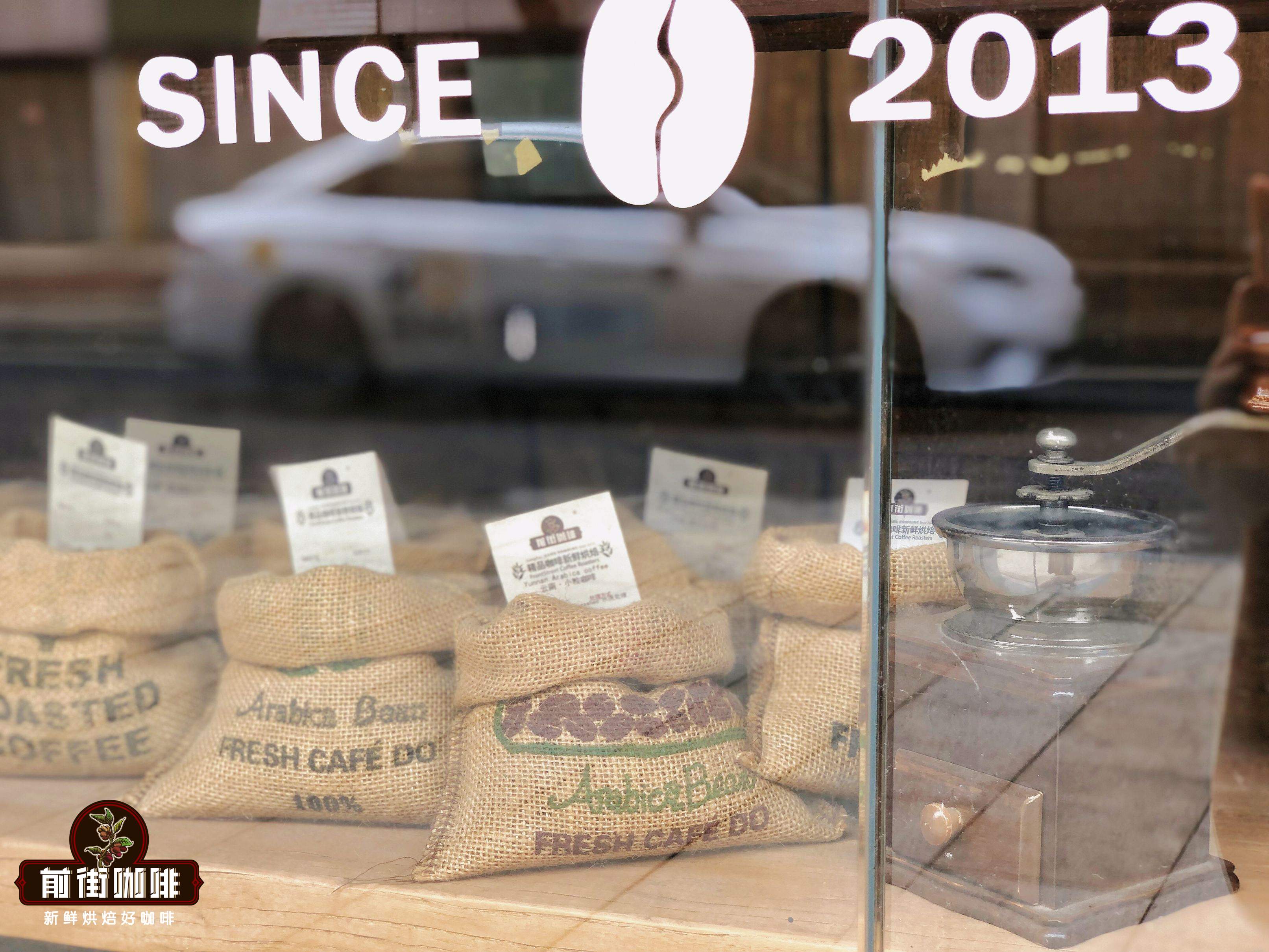
As long as there is a transportation strike and extreme weather in Brazil, the price of coffee beans will rise, and the futures price of Elaraby coffee beans has doubled in 2021 alone.
Brazilian coffee beans produced about 63.4 million bags (60 kg each) in 2020, accounting for 37.4 per cent of the global market share. If Brazilian coffee production falls, global coffee bean futures prices will also rise.
Compared with Ethiopia, which is recognized as the country of origin of coffee beans in the world, Brazilian coffee was grown in 1727 and was initially produced less and was used only for domestic use. Later, as a result of the American War of Independence, Washington publicly declared coffee a patriotic drink in order to break away from Britain. The surge in the number of cafes in the United States has led to a surge in coffee bean imports, providing trade opportunities for Brazil.
Brazilian coffee cultivation expanded rapidly in the 19th century, and by the middle of the 19th century, Brazilian coffee beans accounted for the majority of Brazil's total exports. Coffee beans have brought huge economic benefits to Brazil, and even built railways, making it easier for coffee plantations far inland to transport coffee beans to ports, and coffee plantations have expanded rapidly.
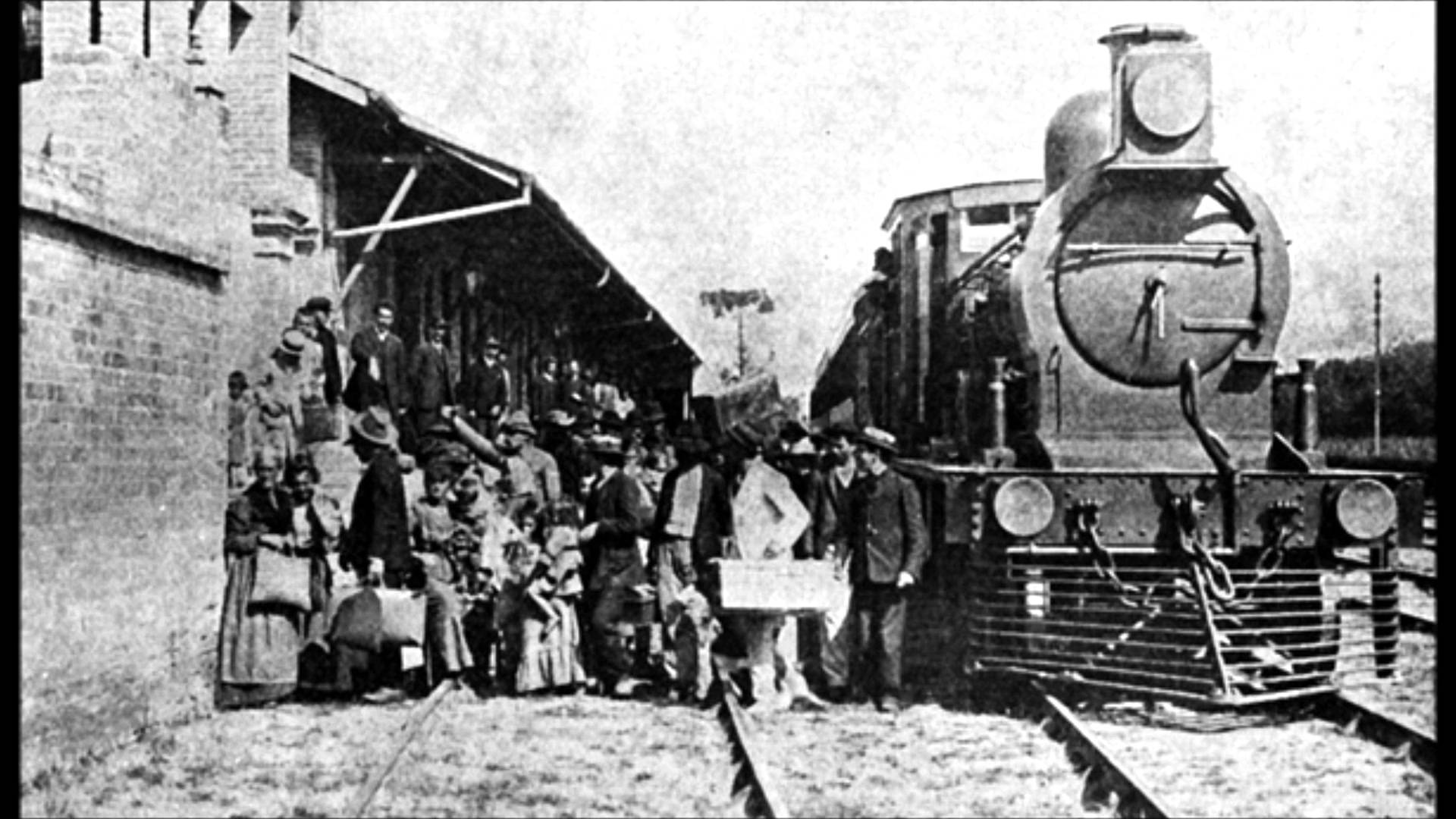
In the 1860s, coffee became a military material with rigid demand in the American Civil War. The demand for Brazilian coffee has greatly increased, but due to the low production capacity of the tin card variety, a higher production capacity bourbon variety has been introduced from Reunion Island. By the 1870s, the bourbon variety had become the most important coffee variety in Brazil.
Unfortunately, in the early 1930s, the United States suffered from the Great Depression, when Brazilian coffee production already accounted for about 80% of the world's coffee production. The United States, as the largest consumer of Brazilian coffee, could not afford coffee, and Brazilian coffee beans were unsalable. Can only be pushed in the warehouse. However, the more the quantity, the more serious the devaluation. Later, the Brazilian government had to burn 78 million bags of coffee.
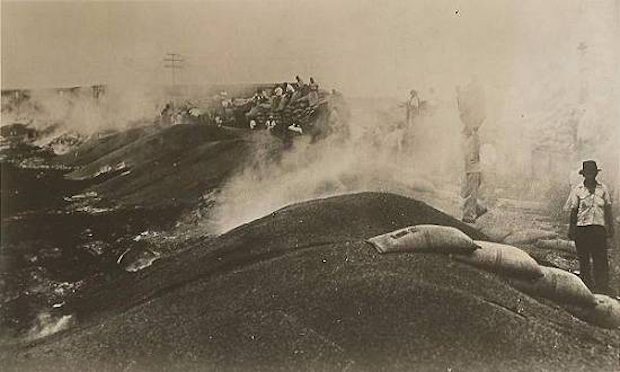
Brazil is a coffee-rich country, with 17 of the 21 states producing coffee. But Brazilian coffee production is mainly concentrated in six states: Bahia, Esp í rito Santo, Minas Gerais, Sao Paulo, Parana and Rondonia.
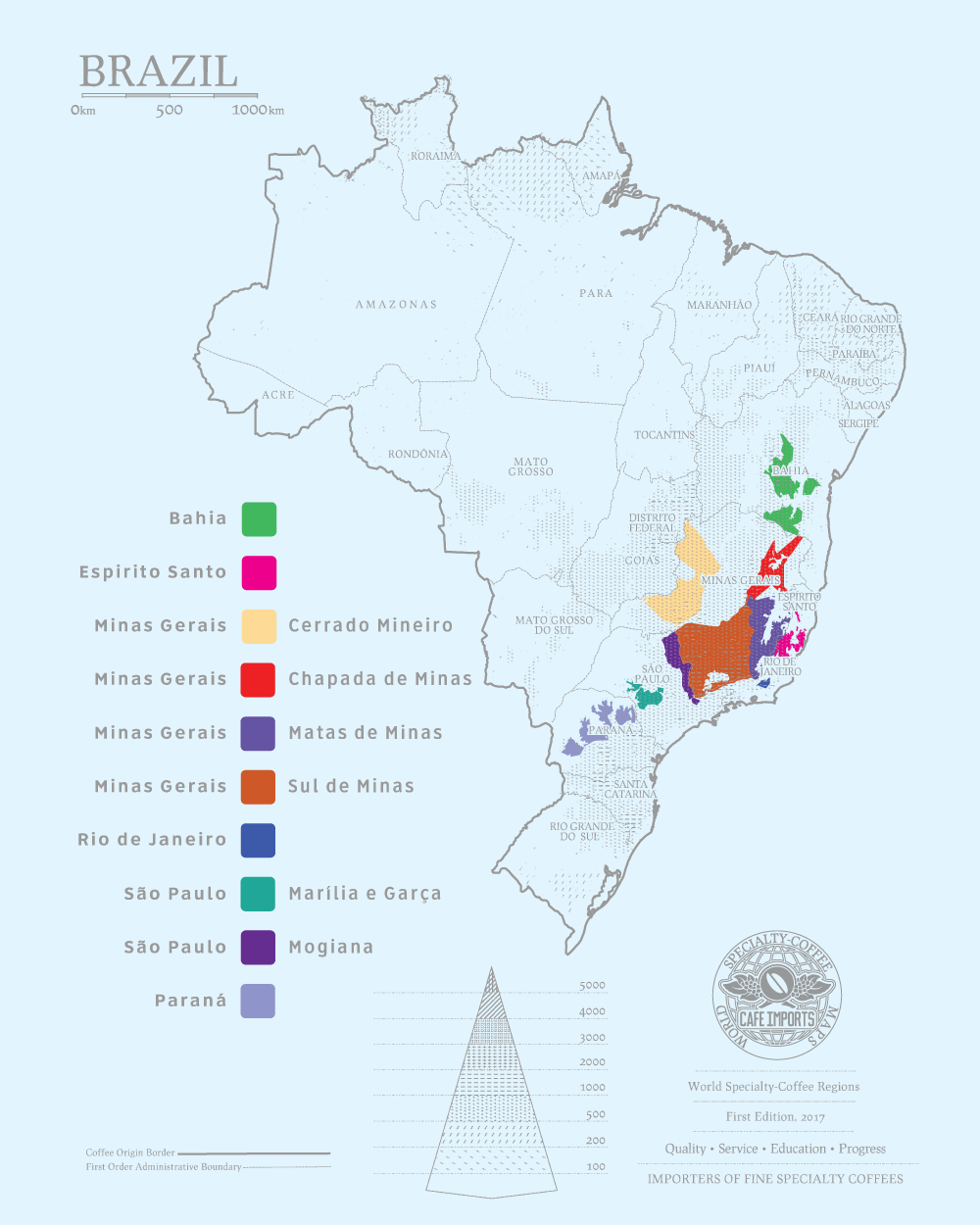
The main differences between each coffee-producing country include the soil, altitude and temperature of the farm where the coffee is grown. Brazilian coffee beans are characterized by weak sour taste, obvious sweetness and supple entrance. There are only two kinds of Brazilian coffee on the bean list of front street coffee, one is Brazilian Red bourbon, the other is Brazilian Queen's Manor.
Among them, Brazil Red Bourbon is summarized in the rations bean series, which shows the importance that Qianjie attaches to this coffee bean.
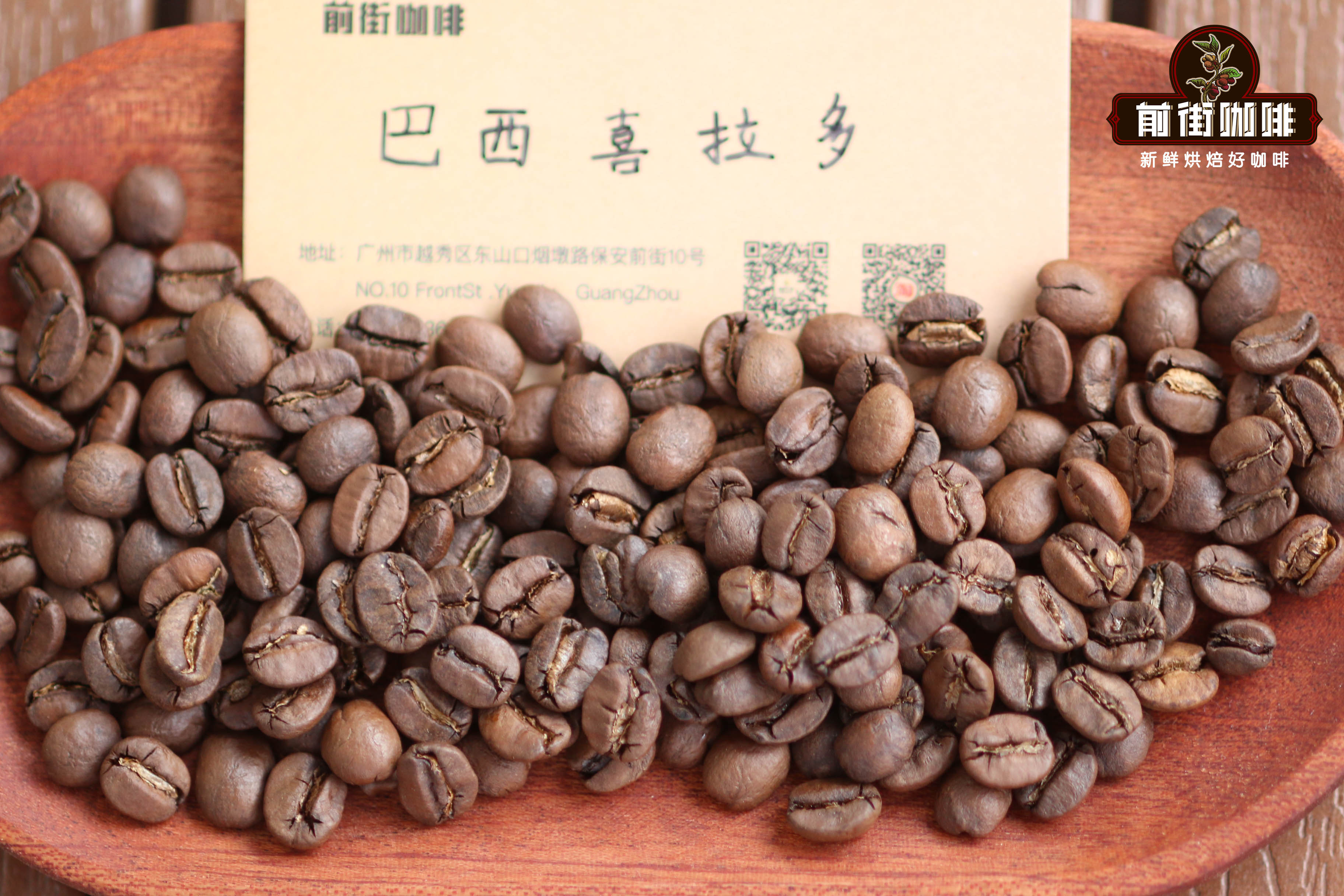
Qianjie Coffee Brazil Red bourbon
Producing area: Syrador, Minas Gerais, Brazil
Altitude: 1000 m
Variety: red bourbon
Treatment: half-sun
The treatment of half-sun is the prototype of honey treatment. In 1990, Brazil wanted to adopt the water washing method in order to increase the export volume of coffee beans, but because the Brazilian weather was dry and lack of water, and the water washing treatment required a large amount of capital investment, the peeled solarization method (Pulped Natural), or half-sun method, was invented.
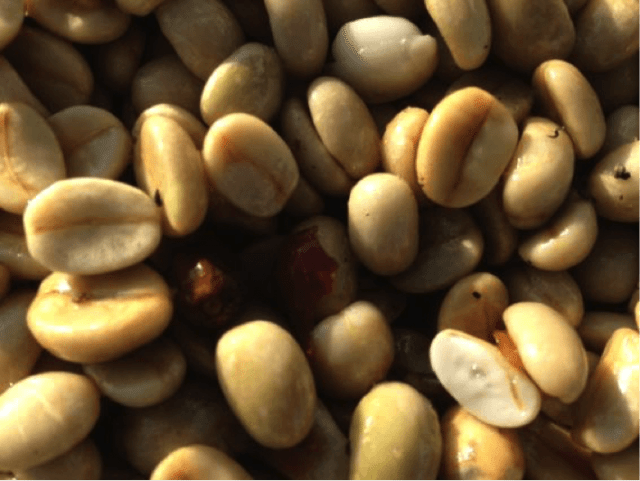
The preparation method of removing the peel and pulp and retaining part of the pectin for drying can take less time than the oldest primitive sun treatment method, and can effectively improve the quality of raw beans and coffee flavor and taste. The traditional half-sun drying method in Brazil also provides a good reference for some coffee-producing countries in the Americas that are short of funds and water resources. Costa Rica's honey-treated coffee is an excellent example.
This Brazilian red bourbon on Qianjie Street is made in Sirado, which belongs to the main producing area of Minas Gerais, which accounts for about 40% of Brazil's coffee production in 2020. Coffee is grown between 800m and 1200 m above sea level in Sheilado. Syracuse is the first coffee producing area in Brazil to obtain certification of Brazilian origin, which is mainly composed of large-scale coffee plantations.
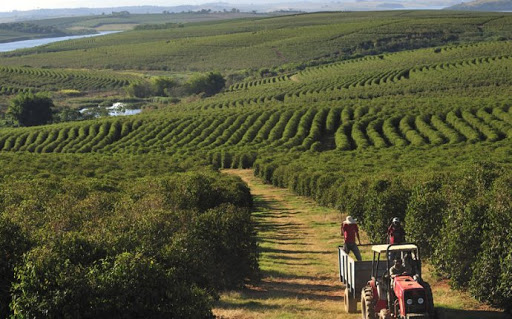
In the Qianjie food bean series, the Brazilian half-sun red bourbon has a strong nutty, chocolate flavor, caramel sweetness, soft and silky taste and overall balance.
There is another Brazilian yellow bourbon in the Brazilian country column of Qianjie bean list for everyone to compare. The Brazilian yellow bourbon on the front street bean list comes from the Queen's Manor in the Morgiana producing area of Sao Paulo state. The Morgiana producing area in Sao Paulo has steep terrain, high altitude, mild climate, fertile red volcanic soil and easy to produce high-quality coffee beans.
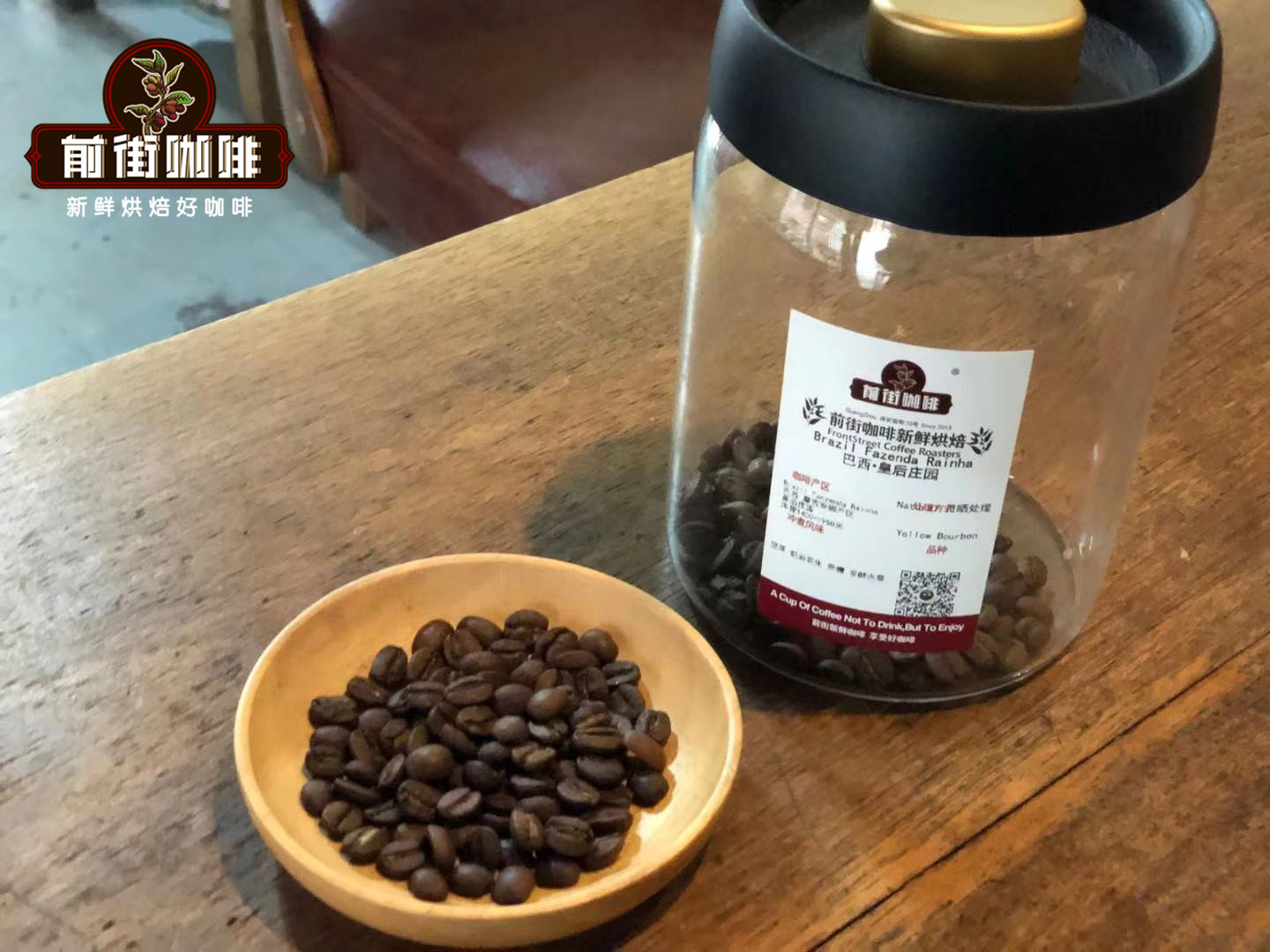
Qianjie Coffee Queen Manor of Brazil
Producing area: Morgiana, Sao Paulo, Brazil
Manor: Queen's Manor
Altitude: 1400 m-1950 m
Variety: yellow bourbon
Treatment: insolation
Qianjie tested coffee beans in different producing areas and found that fertile soil is a necessary condition for producing high-quality coffee beans. With the increase of soil fertility, the yield of coffee trees increases, in addition, it can better resist the invasion of coffee plant diseases, which is particularly important for the cultivation of Arabica coffee varieties. Mineral-rich soil can also have a great effect on the flavor of healthy coffee fruits.
The Queen's Manor covers an area of 280 hectares, of which 200 hectares are planted with this yellow bourbon coffee variety. The front street through the cup test red bourbon and yellow bourbon comparison found that yellow bourbon sweet feeling is more obvious, but also with a hint of lemon aroma, fruit flavor is also better rich. Scientific verification found that the yellow bourbon variety has more sugar than the red bourbon variety, which is because the pectin layer of the yellow bourbon is more abundant and contains more sugars.
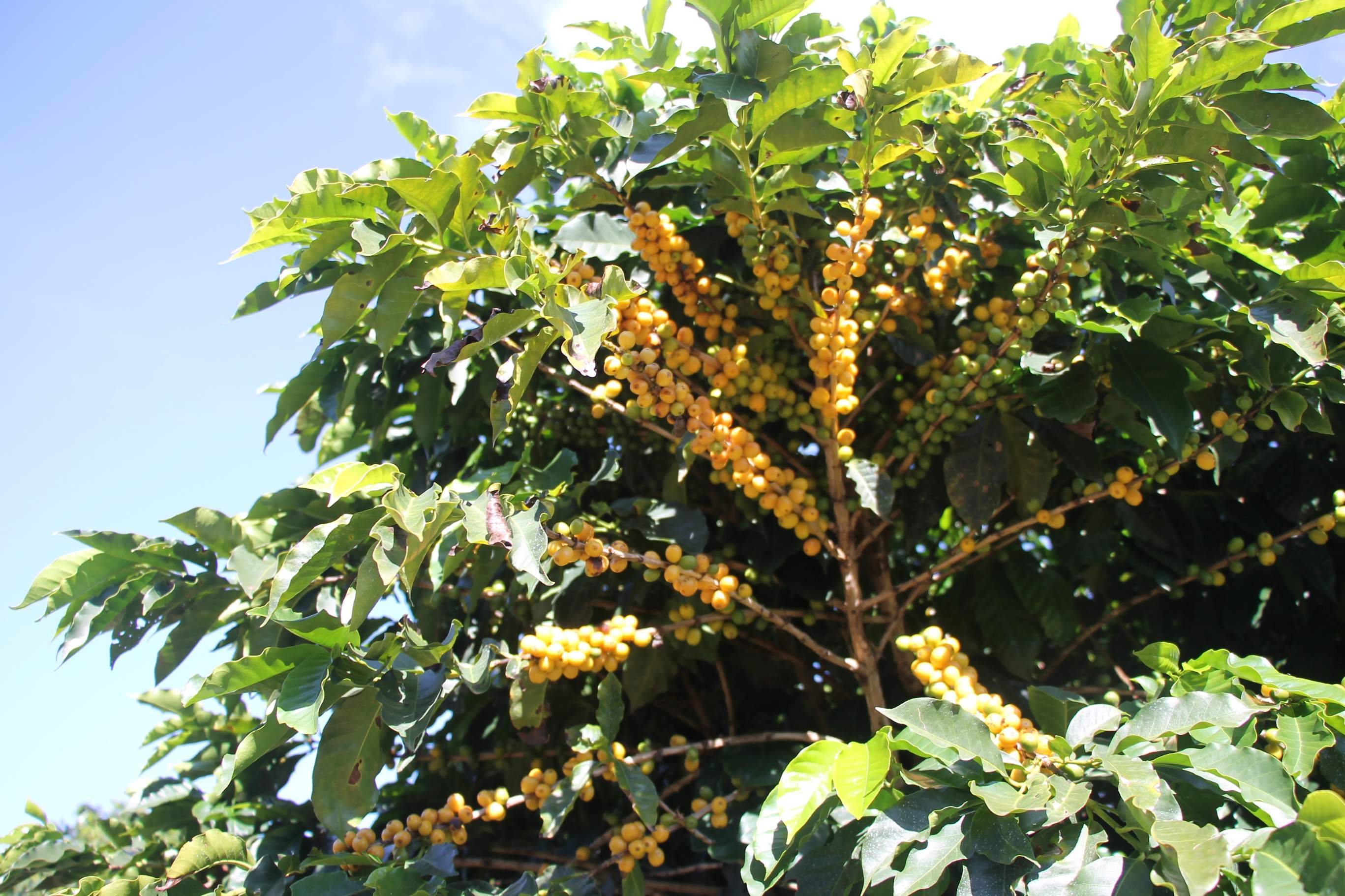
The Huang bourbon of the Queen's Manor on the front street is treated by the sun, so that this already sweet yellow bourbon coffee is sweet, please climb to a higher floor. As the sun treatment requires more labor, the Queen's Manor uses the sun treatment method, in order to ensure the quality of coffee beans, is a small-scale sun, and evenly placed on the African viaduct bed sun drying. The invention avoids the bad fermentation taste caused by the uneven turning of the coffee fruit and the soil smell caused by sticking to the soil.
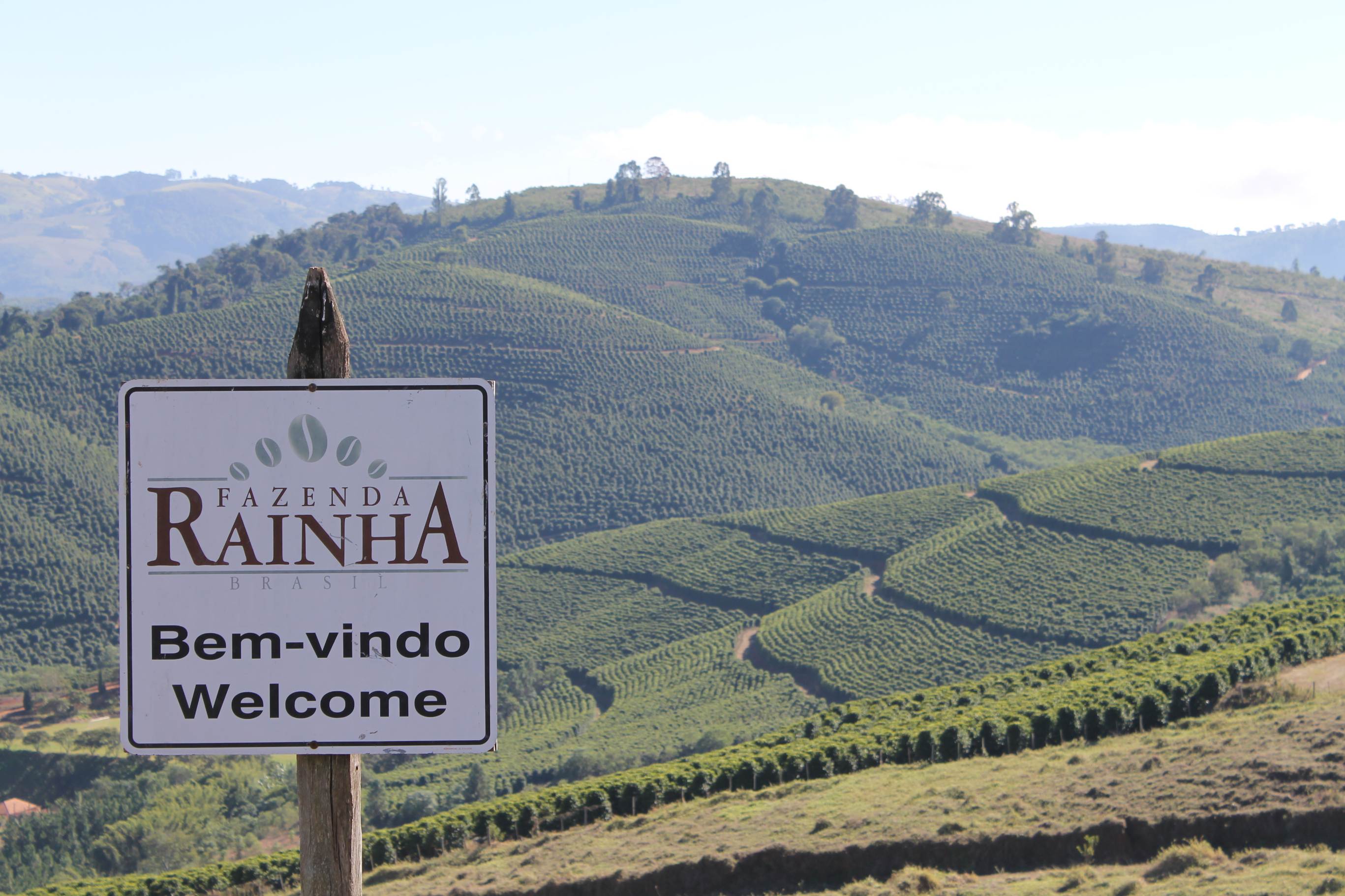
After receiving this raw bean carefully concocted by the Queen's Manor, the baker on the front street used medium-to-deep roasting to highlight the sweetness of yellow bourbon, the nutty flavors of Brazilian coffee and the soft and mellow taste.
When brewing this coffee, because it is medium-deep roasting, Qianjie recommends the use of slower filter cups, such as KONO filter cups. In order to avoid overextraction due to slow flow rate, the water temperature can be 88 degrees Celsius and the degree of grinding is slightly thicker. At the same time, in order to have a richer sense of hierarchy, it is recommended to use the method of three-stage water injection.
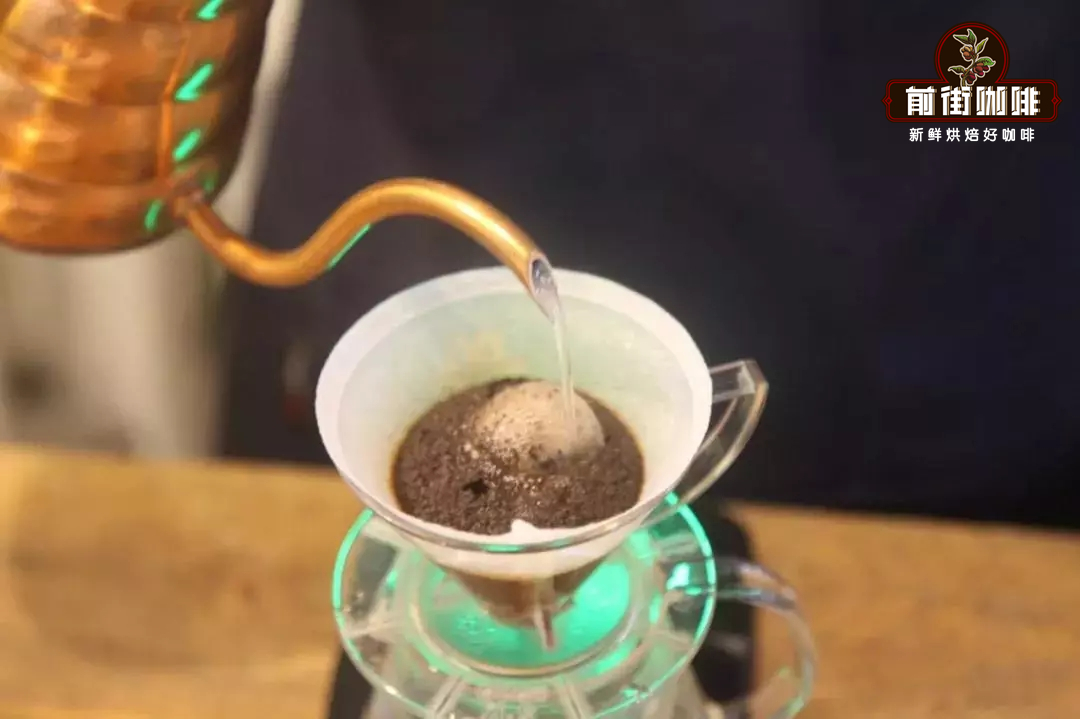
Filter cup: KONO filter cup
Water temperature: 88 degrees Celsius
Amount of powder: 15g
Ratio of powder to water: 1:15
Degree of grinding: pass rate of No. 20 screen 70%
First inject 30 grams of water and steam for 30 seconds, slowly circle a small flow of water into the second section of water to 125 grams, wait for the water level in the filter cup to drop to 1 stroke 2, gently inject the third section of water to 225 grams, the water in the filter cup drips completely to the bottom to pick up the container, and the filter cup can be removed, the total extraction time is about 2 minutes.
For more information about coffee beans, please follow the coffee workshop (Wechat official account cafe_style) and exchange professional coffee knowledge. Please add Wechat account kaixinguoguo0925.
Important Notice :
前街咖啡 FrontStreet Coffee has moved to new addredd:
FrontStreet Coffee Address: 315,Donghua East Road,GuangZhou
Tel:020 38364473
- Prev

How to drink Brazilian coffee beans description of varieties and taste characteristics of Brazilian coffee beans
Professional coffee knowledge exchange more coffee bean information Please pay attention to the coffee workshop (Wechat official account cafe_style) Brazilian coffee beans refers to all the coffee beans grown in Brazil, except for Santos, Brazilian beans are mostly cheap and good coffee. Comprehensive coffee beans that can be used for mass production, mostly re-roasted
- Next
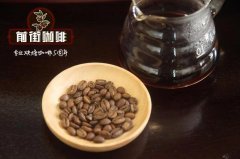
Description of taste and flavor characteristics of Colombian hand-brewed coffee
Professional coffee knowledge exchange more coffee bean information please pay attention to the coffee workshop (Wechat official account cafe_style) Colombian coffee, is the most representative of a good variety of coffee, is the traditional deep-roasted coffee, with a strong and memorable taste. Colombian coffee is full-bodied and full-bodied, with clear high-quality acidity and high balance.
Related
- Beginners will see the "Coffee pull flower" guide!
- What is the difference between ice blog purified milk and ordinary milk coffee?
- Why is the Philippines the largest producer of crops in Liberia?
- For coffee extraction, should the fine powder be retained?
- How does extracted espresso fill pressed powder? How much strength does it take to press the powder?
- How to make jasmine cold extract coffee? Is the jasmine + latte good?
- Will this little toy really make the coffee taste better? How does Lily Drip affect coffee extraction?
- Will the action of slapping the filter cup also affect coffee extraction?
- What's the difference between powder-to-water ratio and powder-to-liquid ratio?
- What is the Ethiopian local species? What does it have to do with Heirloom native species?

